


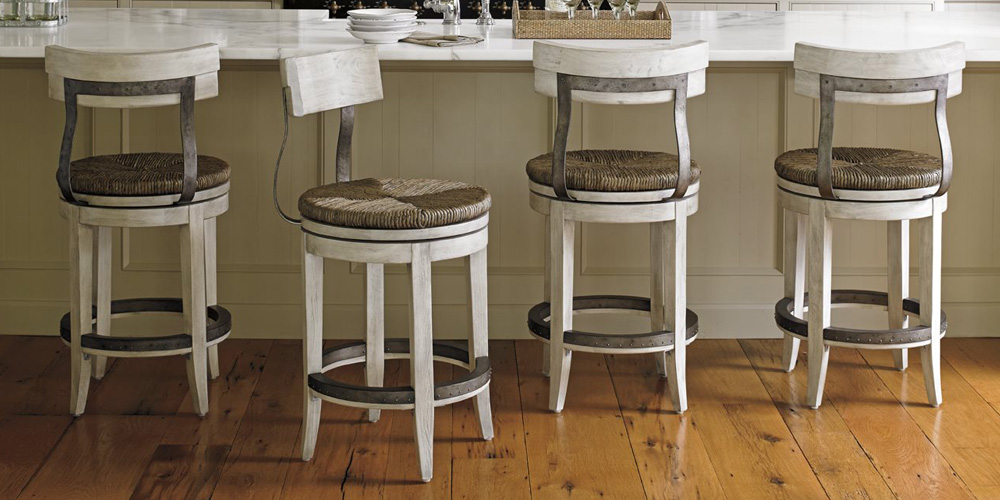
From your kitchen, dining room, or even entryway, bar stools are efficient seating options that can be used in nearly any space in your home. The versatility of bar stools brings function and style to any gathering space, and adds a communal vibe to your home. With their narrow profile and height, bar stools provide a casual, yet well-tailored aesthetic to any room.
There are three common heights used for bar stools that will best suit your needs, depending on the height of your table and the overall measurements of your room.
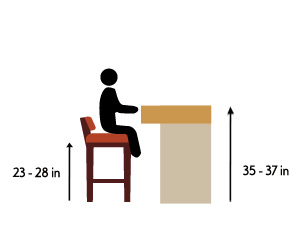
Counter-Height Bar Stool: Generally between 23 inches to 28 inches, counter-height bar stools are smaller in scale than standard size bar stools. Counter-height bar stools pair best with 35-inch to 37-inch table heights.
Best Use: Popular for kitchen islands

Bar-Height Bar Stool: A bar-height bar stool typically measures between 29 inches to 32 inches from floor to seat. Bar-height bar stools pair best with 41-inch to 43-inch table heights.
Best Use: Ideal for work spaces (such as a garages). Used for standard 42-inch bar countertops (such as restaurants)
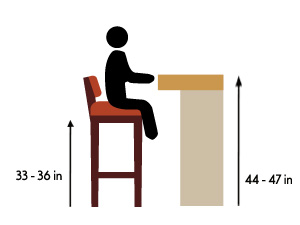
Extra-Tall Bar Stool: An extra-tall bar stool measures between 33 inches to 36 inches, and is ideally paired with 44-inch to 47-inch table heights.
Best Use: Extra tall countertops
When deciding on seat width, comfort and size will be key elements in choosing the right size bar stool to fit your space. Standard seat widths for seat heights are shown:
15-inch seat / Counter-Height bar stool
17-inch seat / Bar-Height bar stool
21-inch seat / Extra-Tall bar stool
To ensure you find the perfect fit when pairing a bar stool with a table, follow these measuring guidelines.
Measure from the top of the counter or tabletop to the floor.
Subtract 10 inches to 12 inches from the counter or table height.
This will give you the approximate height of your ideal stool for optimum space and comfort for your legs. For example, if your tabletop measures 40 inches tall, the ideal bar stool will measure between 28 inches to 30 inches.
Other measurements to consider when choosing a bar stool is the space between each stool when placed side-by-side along a counter. To allow the optimal amount of space for eating, working, and socializing, make sure to leave at least 6 inches of space between each stool. There should be at least 26 inches to 30 inches between each bar stool (measured from the center of one stool to the center of the stool next to it).
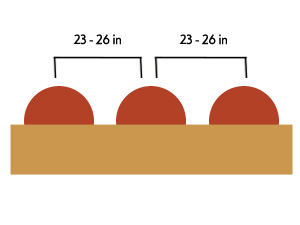
Bar stools are constructed from durable materials to properly support weight. Since bar stool frames can be constructed from a variety of materials including wood, metal, wicker, or plastic, focus on selecting a material that works best with your existing decor. Most bar stools are constructed from either wood or metal, and are offered in a variety of finishes and colors to complement any style or home.
Comfort and function are significant factors when selecting the proper bar stool.
Benefits: Many customers prefer the comfort that a well-cushioned, upholstered seat offers. Upholstered bar stools offer added aesthetic value, and an extra opportunity to introduce color, texture, and pattern to spaces.
Good to Know: Leather, microfiber, and polyester upholstery are the easiest options to clean for upholstered styles.
Benefits: For those using stools in a high traffic area, unupholstered seats with no cushion offer easy maintenance and cleanup.
Good to Know: No cushion stools are ideal for customers who entertain frequently, or customers with small children. Without upholstered fabric seats, customers do not have to worry about wear and staining.

For a more formal look, some bar stools feature armrests. LuxeDecor offers cushioned or padded arms for a more comfortable experience, or wooden arms which deliver more structure and function. Be sure to measure the height of your tabletop or counter to ensure the arms will properly fit underneath the table or counter.
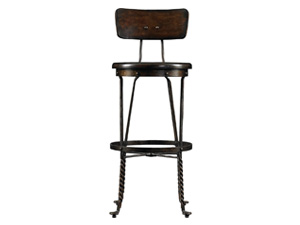
Full Back: Offers extra stability and added comfort for sitting, and is ideal for extended periods of sitting.
Backless: Backless stools feel more casual. The streamlined frame makes stacking easy for added storage convenience.
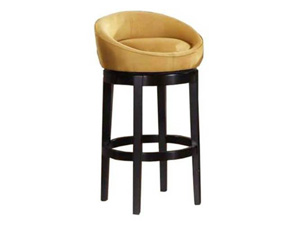
The swivel functions allows bar seats to rotate as the rest of the frame remains stationary. This allows a person to easily turn in a chair, which allows guests to easily move in and out from their seats without having to move the entire seat.
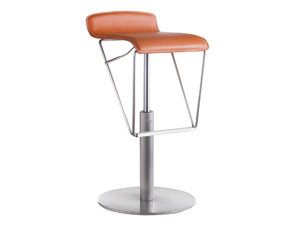
Select bar stools are equipped with an airlift lever or hydraulic pump, which allows customers to adjust the seat height, up or down. A lift allows for smooth adjustment of height for custom comfort that can be adjusted to your exact height and specifications.This feature is especially helpful for small children and adults who will both be using stools at different times.
Traditional bar stools typically feature a dark finish wood frame and leather upholstered seating to create a stately and formal look in a space.
Rustic style bar stools often feature mixed materials and two-tone finishes. Distressed wood, wicker, and lighter finishes add casual, country charm.
Straightforward materials and streamlined function bring utilitarian flair to industrial style. Industrial style typically features raw metal or wood.
Contemporary style bar stools feature sleek, minimalist frames that are molded from plastic, metal, or wood.



